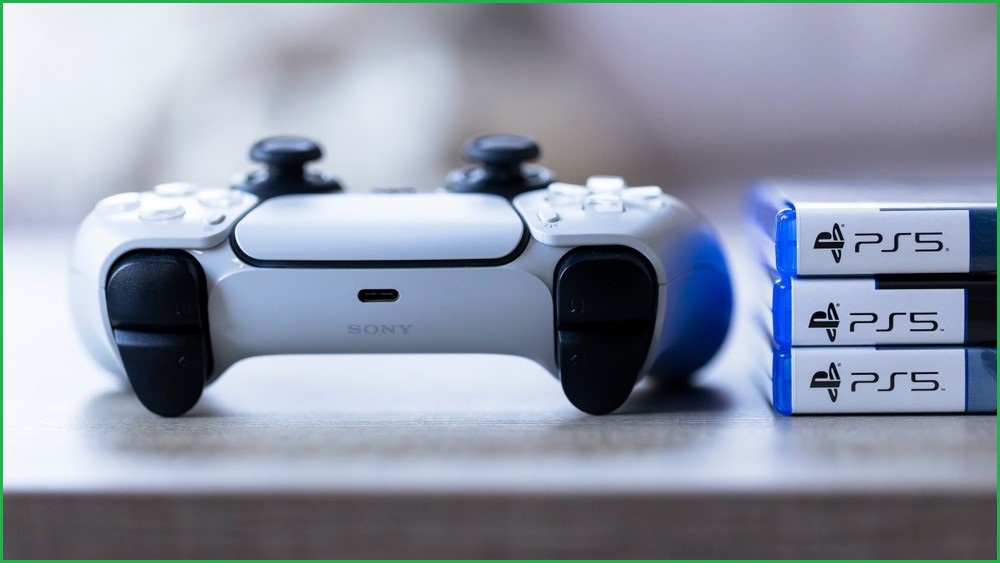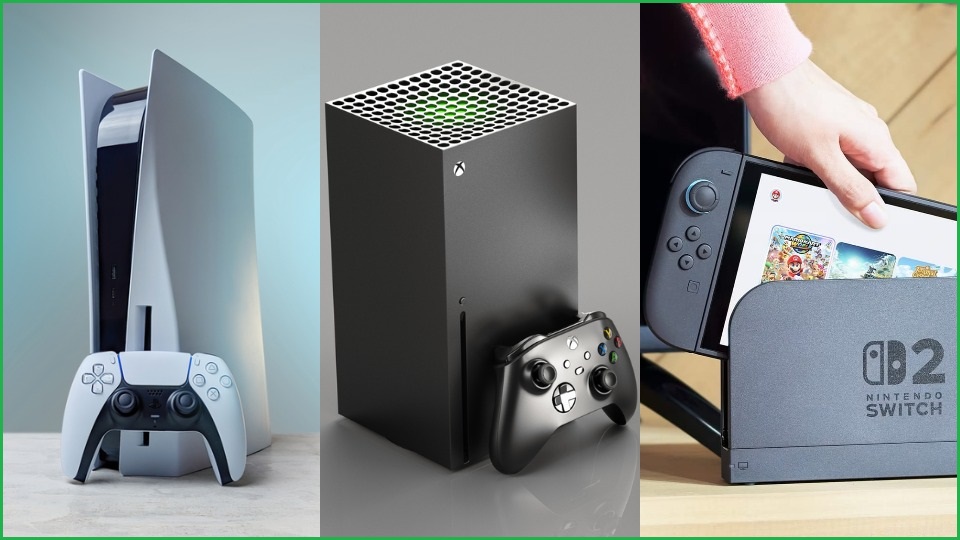It has been a rough few weeks for Australian gamers, with price increases announced across Sony’s PlayStation, Microsoft’s Xbox, and Nintendo’s Switch ecosystems.
The big players in consoles raised their prices almost in unison, leaving some consumers already facing cost-of-living pressures now questioning their next video game purchase.
While many analysts have blamed the price hikes largely on the unpredictable tariff decisions of United States President Donald Trump, there are more factors at play.
Let’s take a look at how big the price increases are in Australia and the reasons for the changes.
PlayStation price hikes hit Australia — but not US, yet
Sony announced in April it had raised the recommended retail price (RRP) of its PlayStation 5 consoles in Australia, as well as in New Zealand, Europe, the Middle East, and Africa.
The price of a standard PlayStation 5 rose from $799.95 to $829.95 in Australia (a 4 per cent rise), while the discless all-digital version went from $679.95 to $749.95 (a 10 per cent rise) and the PlayStation 5 Pro remained at $1,199.
Sony said it made “the tough decision” to raise some of its prices due to “a challenging economic environment, including high inflation and fluctuating exchange rates”.
While Sony did not raise prices in the US this time around, some analysts still expect that to occur at a later date due to Trump's tariffs, which make Chinese-made technology (like PlayStation 5) more expensive to import.

Sony says its decision to raise PlayStation 5 prices is the result of 'a challenging economic environment'. Image: Shutterstock
Xbox prices up Down Under, US hit harder
Microsoft announced last Thursday it had also increased the prices of its consoles, controllers, and first-party games in Australia — but it raised prices in the US by a greater degree.
The Xbox Series X now costs $849 in Australia, up 6 per cent from its previous price of $799 and 13 per cent from its original 2020 release price of $749 (which is $895 in today’s money).
The price of the discless version of the Xbox Series X has risen 7 per cent from $699 to $749, while the base model of the less powerful Xbox Series S has seen a 10 per cent hike from $499 to $549.
Xbox Series X still costs more in the US though, where its price has now jumped 20 per cent to $US599.99 — around $925 in local currency.
The base price of Xbox Series S rose a whopping 27 per cent in the US, from $US299.99 ($460) to $US379.99 ($585).
Microsoft said it also planned on raising the prices of “some” of its new first-party games from $US69.99 to $US79.99 by the end of 2025, which would make them about $125 in Australia.
“We understand that these changes are challenging, and they were made with careful consideration given market conditions and the rising cost of development,” the company said.

Microsoft says its decision to raise Xbox prices reflects 'market conditions and the rising cost of development'. Image: Shutterstock
Nintendo raises prices for the Switch 2
Microsoft’s move to increase first-party game prices reflected Nintendo's earlier decision to raise prices on some of its first-party exclusives for its upcoming Switch 2 console to the same $125 ($US79.99) mark.
When it is released on 5 June, the Switch 2 will cost $699 — a higher price tag than the original Switch, which cost $469 in 2017 (about $585 in today's money).
The Switch 2’s release was announced on 2 April — the same day Trump announced significant tariffs on nations around the world, including on China, Japan, Vietnam, and Cambodia, where most consoles are manufactured.
Nintendo even delayed Switch 2 pre-orders in the US and Canada for two weeks after Trump announced 24 per cent tariffs on imports from Japan.
The company said the delay was implemented “in order to assess the potential impact of tariffs and evolving market conditions”.
On the day of the Switch 2 and global tariff announcements, Nintendo of America president Doug Bowser (yes, like the Nintendo character) told CNBC the company “didn’t consider tariffs” when setting the price of the Switch 2.
“We’re still all trying to really understand it better, and to understand what possible impacts may rise from that,” he said.
He argued the price increase between the first Switch and the Switch 2 was due to the new console’s hardware improvements and new social connectivity features.
Bowser also said the company was “not really looking to establish a benchmark for pricing” by raising the cost of its first-party games, and argued prices were set on a game-by-game basis.
“There is no standard price,” he said.
University of Sydney researchers wrote in April that it was “hard to imagine a scenario in which Nintendo simply absorbs those [tariff] costs”, and argued Switch 2 prices could rise further.
“The company has historically maintained positive margins on hardware,” they said.
“It is also famously conservative when it comes to its pricing strategy.”

Nintendo says it 'didn't consider tariffs' when setting the price of the Switch 2. Image: Nintendo / Supplied
Tariffs not solely responsible for video gaming price rises
While some games and consoles have been more expensive in previous generations — the PlayStation 3 cost $999 when it launched in 2007 (more than $1,500 in today's currency) — there has been a series of price rises for current generation devices and games.
Alvin Lee, a technology analyst with Australian firm Telsyte, told Information Age that while US tariffs were a global factor in those rises, they were also caused by “broader economic pressures, currency fluctuations, and rising manufacturing costs, shipping and labour”.
The COVID-19 pandemic caused many gamers to increase their playing time and purchases while stuck in lockdowns, and lower interest rates provided cheaper loans for publishers and developers.
Since the boom, the gaming industry has experienced a dip involving significant layoffs, less venture capital and publisher investment, and tighter margins.
Of course, there are also the US import tariffs, which companies are largely expected to pass on to consumers.
While the White House has temporarily paused the tariffs with a 10 per cent baseline tax on all nations, Trump has proposed specific tariffs on semiconductors and other electronic products, and China still faces tariffs of up to 145 per cent on its goods.
“Price rises will inevitably sting, but console gamers — much like their PC counterparts — tend to be loyal to blockbuster AAA and exclusive titles,” Lee said.
“We expect the overall demand to hold up with strong console game pipelines and the upcoming release of Nintendo Switch 2, though buyers might become more selective about what they buy and when.
“Beyond waiting for discounts, bundles, subscription services, and cross-platform compatibility are becoming essential ways for gamers to stretch their entertainment budgets further.”
Australia's Interactive Games and Entertainment Association (IGEA), which counts both local game developers and Sony, Microsoft, and Nintendo as members, told Information Age it would not comment on pricing changes or whether they would impact local sales.
The rise of PC, mobile, handheld, and cloud gaming
Higher prices and tightly controlled ecosystems in console gaming have contributed to growth in PC, mobile, handheld, and cloud gaming systems, analysts said.
Research published by Telsyte in 2024 found while the average time spent on home console gaming in Australia had held steady, consumers were spending more time playing on PCs and handheld consoles such as the Steam Deck and Nintendo's Switch Lite.
A recent report by investor and analyst Matthew Ball, CEO of advisory firm Epyllion, stated, “The success of [Nintendo] Switch and Steam Deck, advances in mobile GPUs, plus living room console stagnation have made handhelds a renewed area of opportunity and focus.”
PC, meanwhile, "offers the most flexibility with broader hardware and store options, making it increasingly appealing as prices rise elsewhere”, according to Lee from Telsyte.
Mobile and cloud-based gaming saw the strongest user and subscription growth in Australia in 2024, “driven by convenience, better hardware, and the growing reach of 5G”, he said.
“Australians hold over one million could gaming subscriptions, including services like Xbox Cloud Gaming and GeForce Now."









